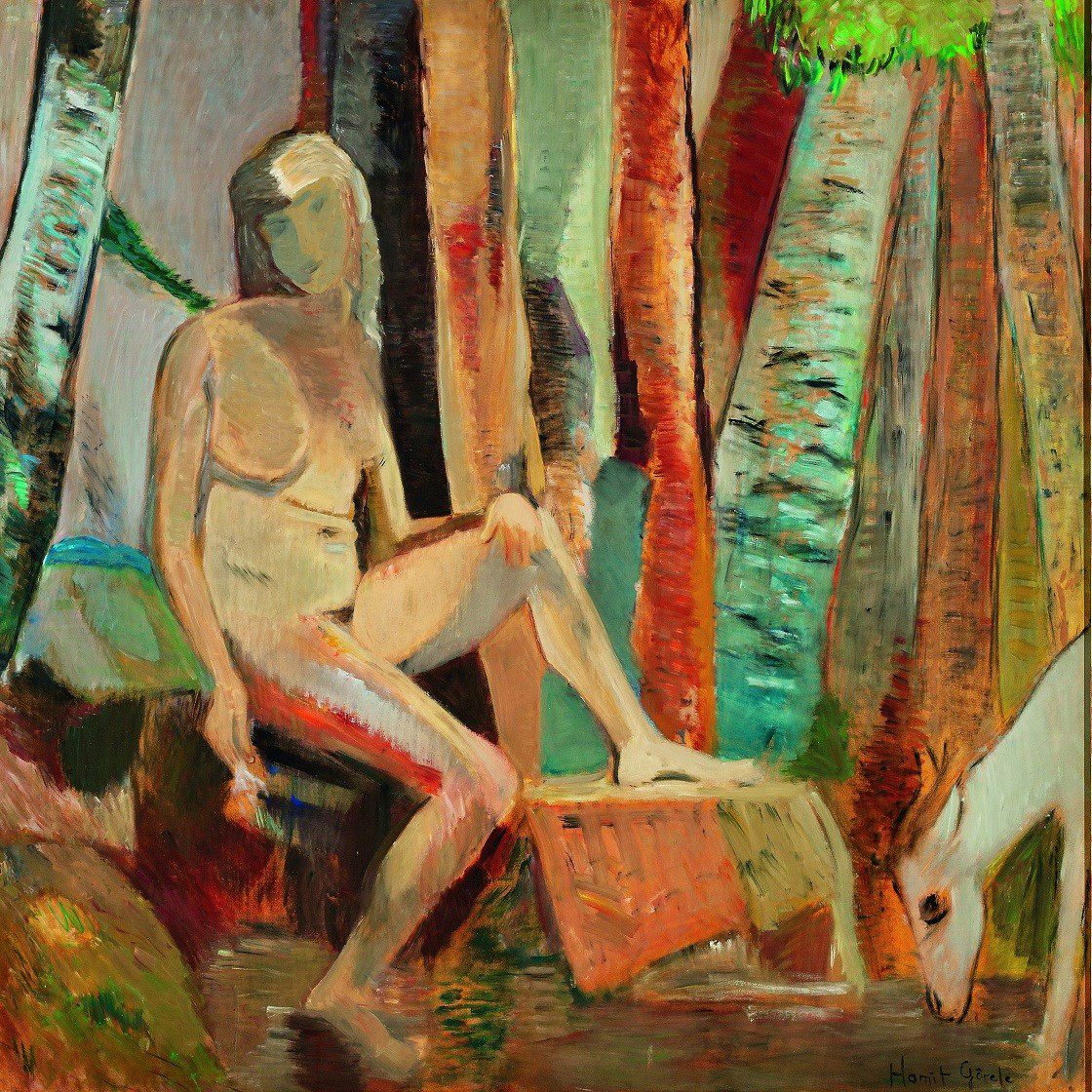- Open Today: 10.00–18.00
- Ticket
- Shop
- Membership
- TR EN

Hamit Görele, 1894-1980
Forest Nymph, c. 1940
A student of İbrahim Çallı and Hikmet Onat at the Academy of Fine Arts, Hamit Görele went to Paris after graduating and worked first at the Académie Julian and then at the André Lhote studio. As a painter, he refrained from joining any artistic movement or group in Turkey. Many of the elements in Görele’s Forest Nymph such as the tree trunks are reminiscent of the Bathers series to which Paul Cézanne gave so much attention and importance late in life. The deer in the lower right corner suggests early 19th century masters of French art such as Gustave Courbet, as well as pioneers of Turkish painting such as Şeker Ahmet Paşa, who were inspired by them. In addition to its Cézanne references, Forest Nymph may also be linked to Academic traditions due to its mythological associations with ancient wood nymphs, which were believed to be the life-spirits of trees. The influence of André Lhote can be discerned in the figure of the nude woman, central to this mythological scene set in an imaginary forest. Görele shows us a deformed figure, with sketchily drawn facial features. His message is mainly conveyed through the composition’s layout and color scheme, which evoke a sense of almost timeless calm.
Painting
Oil on plywood
Istanbul Museum of Modern Art Collection
Eczacıbaşı Group Donation